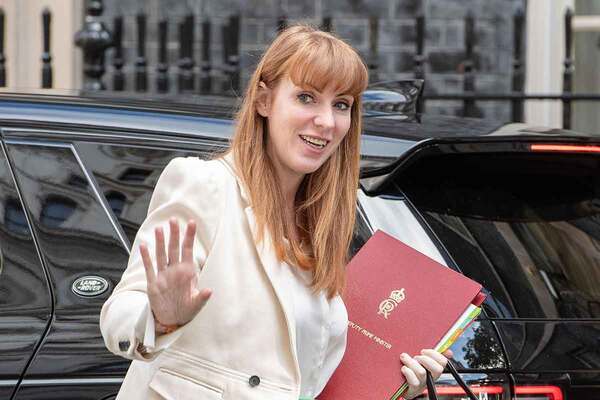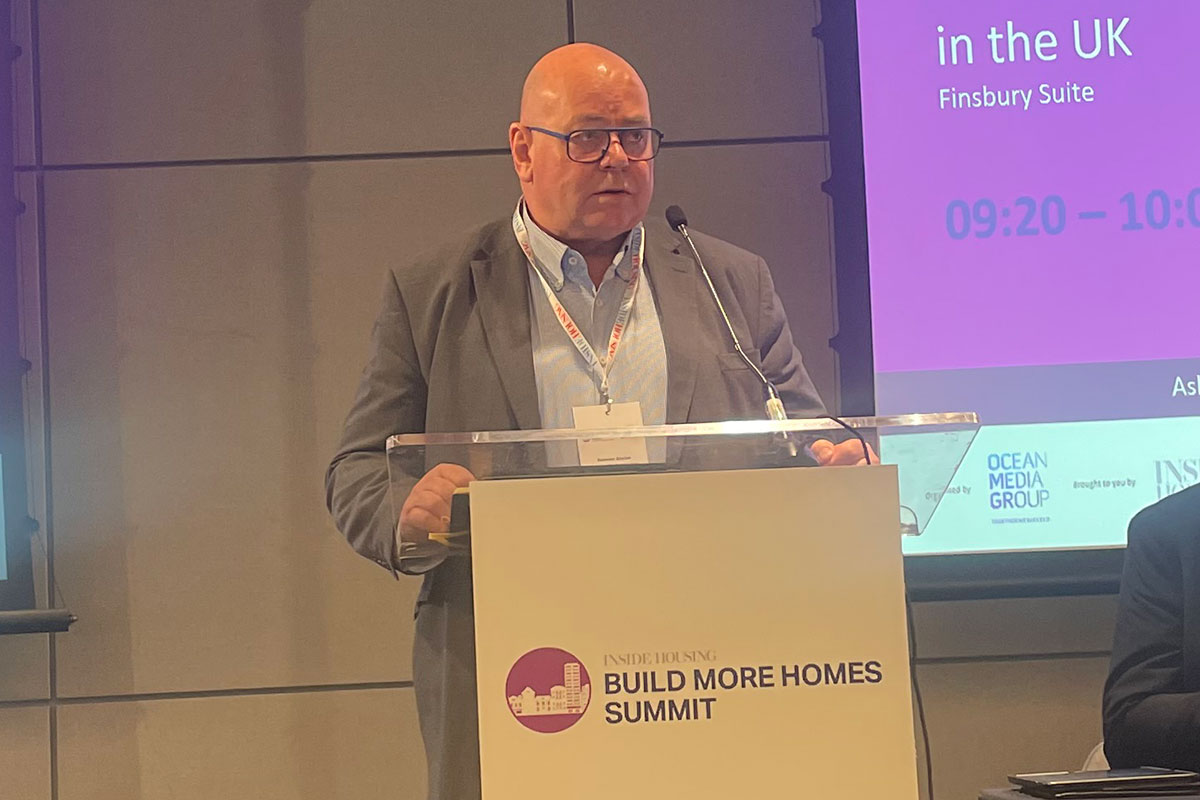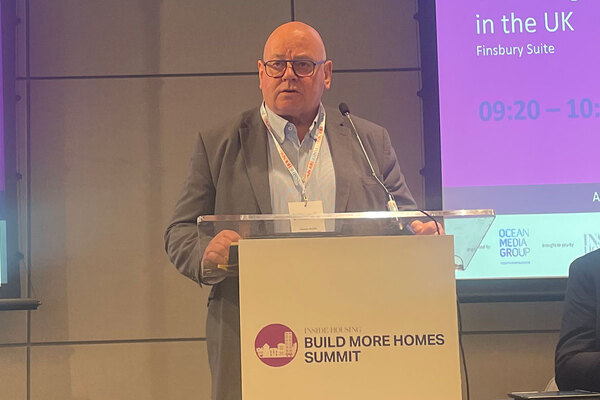‘Welcome if modest’ relief for borrowers, as Bank of England cuts rates but remains alert to inflation
The first base rate cut in four years will bring “welcome if modest relief” for housing association borrowers, commentators have indicated, while the Bank of England remains “highly alert” to inflation risks.
The Bank of England has lowered its rate by a quarter of a per cent, marking the first rate cut since March 2020.
The decision was taken at the institution’s scheduled Monetary Policy Committee (MPC) meeting on Wednesday (31 July), where five members voted in favour of a 0.25 per cent cut, versus four who preferred to maintain the status quo.
Phil Jenkins, managing director and founding partner of Centrus, told Social Housing that the MPC’s “tightly balanced decision” to trim rates to five per cent would come as a “welcome if modest relief to housing association treasurers looking to manage their interest costs”.
Until now, rates have been held at 5.25 per cent, since the last rate rise a year ago. Last August’s 0.25 per cent increase came at the end of a series of regular rises since February 2022.
The backdrop to this week’s announcement is that inflation has held steady for the past two months at the level of the Bank of England’s two per cent target. After falling to 2.3 per cent in April (from 3.2 per cent in March), the 12-month Consumer Price Index (CPI) metric dropped to exactly two per cent in May and remained at that level in June.
Announcing the rate cut on Thursday (1 August), the central bank said that it was “now appropriate to reduce slightly the degree of policy restrictiveness”.
Noting that the impact from “past external shocks” had abated, it said there had been “some progress in moderating risks of persistence in inflation”.
However, Andrew Bailey, the bank’s governor and chair of the MPC, said there was a need to ensure inflation “stays low”.
He added: “[We] have to be careful not to cut interest rates too much or too quickly.”
The bank said that its expectation is for inflation to rise again this year, to around 2.75 per cent, but that this would be temporary. It expects the figure to fall again next year.
Mr Bailey said: “Over the coming years we need to make sure that inflation will continue to stay low. High inflation has affected everyone, but it particularly hurts those who can least afford it.”
The MPC decision comes just days after new chancellor Rachel Reeves told the House of Commons that her government had discovered a “£22bn hole in the public finances”. This was due to what she called “instances of specific budget that were overspent and unfunded promises that were made” by the previous, Conservative, government. Ms Reeves then set out a number of cost-cutting measures and policies intended to make up the shortfall.
In documents published yesterday, outlining its decision, the Bank of England emphasised that the committee had “been briefed on the government’s 29 July statement on immediate public spending pressures”.
It added: “The government had announced that any changes in the stance of fiscal policy would be set out in the Budget on 30 October. These would be incorporated in the November Monetary Policy Report projections.”
Last week, housing secretary Angela Rayner indicated that the chancellor would use her Spending Review in the autumn to set out plans for the “rent stability” that social landlords need to “borrow and invest”.
‘Favourable direction’
Social Housing asked a number of advisors to the sector what the rate cut would mean for housing association borrowers.
Mr Jenkins at corporate finance consultancy Centrus said that the cut, while “modest”, would come as a welcome relief to housing association treasurers looking to manage their interest costs.
“Coming on top of a strong upward revision to UK economic growth forecasts, this is also likely to be positive for the outlook for the UK housing market,” he said. “With money markets forecasting a second and possibly a third rate cut this year and gilt yields falling across the curve, this represents the first signs of cost of capital moving in a favourable direction following the aggressive ratcheting-up of rates between January of 2022 and mid-2023.”
Beth Collett, partner and head of debt capital markets at law firm Addleshaw Goddard, said the rate cut was likely to stimulate optimism among investors over the likelihood of an increase in capital markets activity by housing borrowers.
Public issuance has remained relatively limited this year, despite some large deals including Sovereign Network Group’s landmark £400m bond in January.
“Any decrease in base rates would clearly be welcomed by housing associations considering raising funding in the capital markets, which may have been waiting for pricing to come down,” Ms Collett said. “With volumes of issuance in the sector having been relatively low over the last couple of years, investors will also be hopeful that it will encourage more supply.”
Gows Shugumaran, who recently joined financial advisory firm Newbridge as a director, noted that there was a long journey ahead on rates but that the decision marked a positive sign of things to come for borrowers.
“Today’s rate cuts will bring welcome relief to both households and housing associations across the country, but the Bank of England has cautiously signalled a slow and steady loosening of policy to avoid any inflationary spiral.
“However, housing associations can view this as a positive sign of things to come alongside the encouraging signs displayed by the new government. Markets are now pricing in a further 25-basis-point cut this year in November.”
Meanwhile, Arun Poobalasingam, funding and marketing director at sector bond aggregator The Housing Finance Corporation, also noted the positive mood among markets and the impact on pricing.
“With the Bank of England cutting rates for the first time since early 2020, there are positive signs that inflationary pressures continue to ease,” Mr Poobalasingam said.
“Long-term rates have remained relatively stable, with the market already anticipating future rate cuts from the Bank of England and pricing them in.”
He added: “The sector continues to have good access to the capital markets with spreads at competitive levels, and registered providers need to think about when the time is right to lock into long-term rates.”
‘Wait and see’
At sector consultancy Altair, director of treasury Gill Bloomfield said that the latest news would allow housing associations to continue to pursue a “wait and see” approach where hedging strategies are concerned.
“Seeing the peak of the interest rate cycle in the rearview mirror will be welcome news for the sector. Although long-term rates stay significantly higher than pre-2021, swap rates have fallen across the curve, reflecting expectations that long-term rates may settle lower than previously thought.
“This allows associations to continue with a more ‘wait and see’ approach to hedging strategies for now and, alongside more stable inflation, should feed into the cautious optimism needed for development programmes to slowly open up once again.”
Likewise, James Tarrant, a director at Savills Financial Consultants, said that while the development was positive in the likelihood that it would lead to slightly lower SONIA rates, associations should not rush to significantly revise their assumptions.
He added: “[The] surprise of the timing of this rate cut versus the market expectation, together with the potential for CPI components to overshoot expectations, mean there is a risk that the BoE could have cut early and may delay further cuts.”
Update: at 12.20pm, 05.08.24
This story was updated to add in further commentary, from Savills.
Sign up for Social Housing’s weekly news bulletin
Social Housing’s weekly news bulletin delivers the latest news and insight across finance and funding, regulation and governance, policy and strategy, straight to your inbox. Meanwhile, news alerts bring you the biggest stories as they land.
Already have an account? Click here to manage your newsletters.
RELATED








